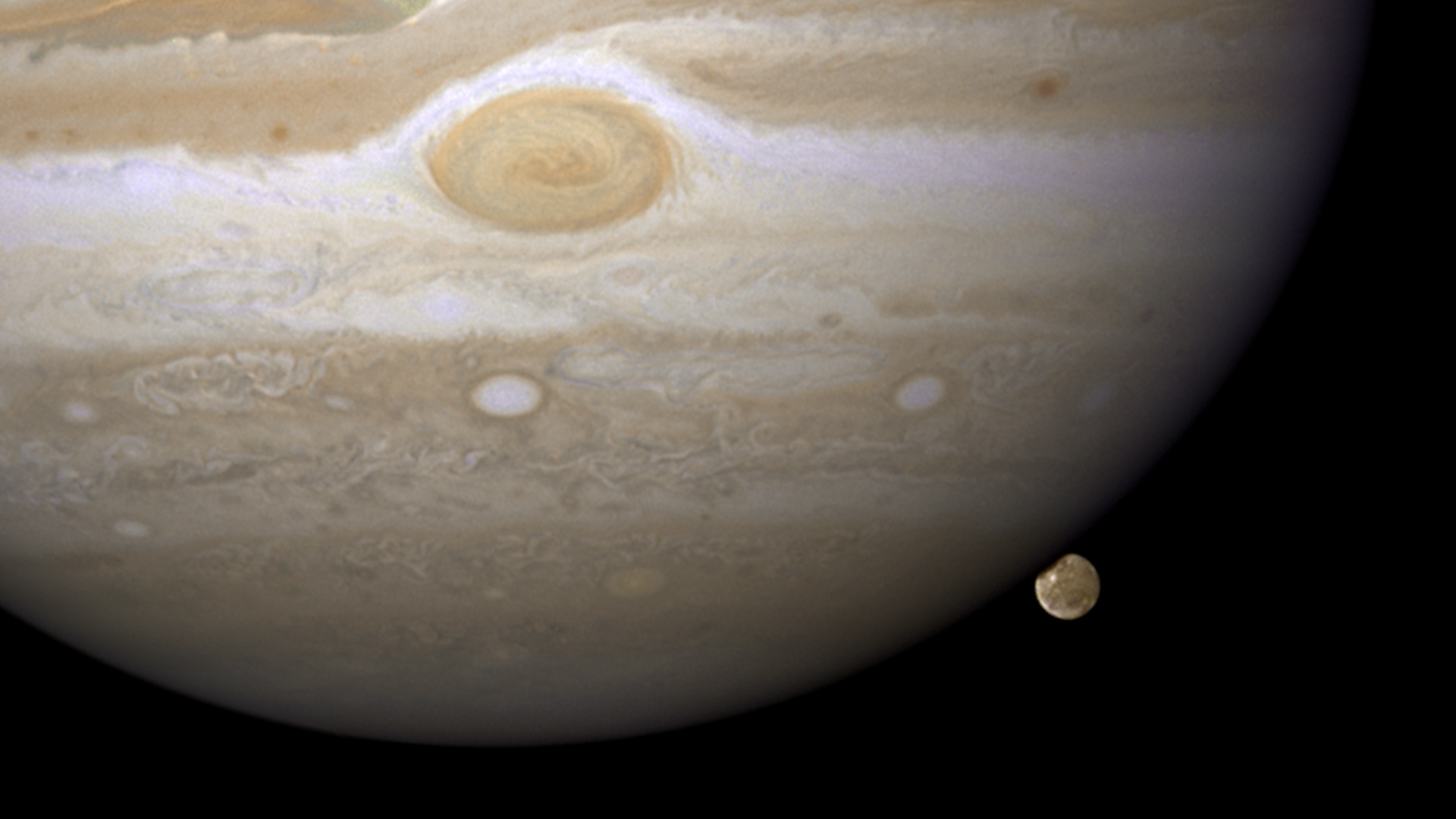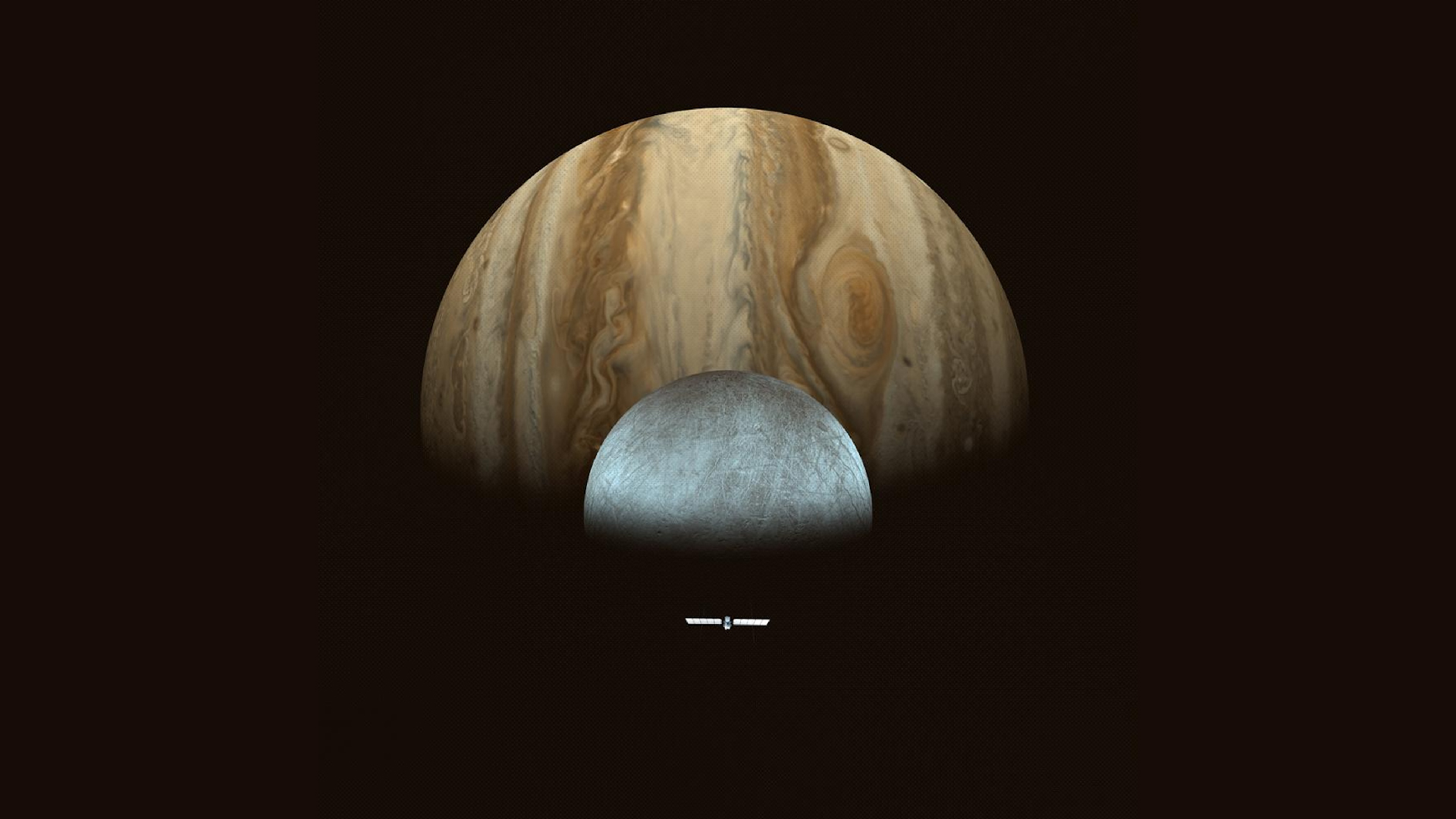How many moons does Jupiter have?
How many moons does Jupiter have? Scientists have discovered dozens of them, but the answer may be more complicated than it seems.

On Oct. 14, NASA's Europa Clipper mission launched from Kennedy Space Center in Florida toward one of Jupiter's largest moons. The launch was eagerly anticipated by scientists around the world, in part because Europa, with its plumes of liquid water and icy crust, is thought to be one of the best places in the solar system to search for life beyond Earth.
But Europa isn't Jupiter's only moon — far from it. Officially, Jupiter has 95 moons recognized by the International Astronomical Union. But the question of how many natural satellites the planet truly has is a bit more complicated.
Jupiter's four best-known moons are the Galilean moons, discovered by Galileo Galilei in 1610. They are named Ganymede, Callisto, Io and Europa, after figures in Greek mythology associated with the god Zeus. ("Jupiter" is the ancient Roman name for Zeus.) These moons are big — each is roughly the size of Earth's moon or larger, and together, they make up around 99.97% of the mass of all the material orbiting the gas giant. Due to their size and the presence of geologic processes like volcanism, these moons produce and maintain their own thin atmospheres.
Related: NASA reveals 'glass-smooth lake of cooling lava' on surface of Jupiter's moon Io
Each of Jupiter's other 91 official moons has a diameter greater than 0.6 mile (1 kilometer) — but only 57 have names, and just eight have regular, nearly round orbits. However, they are "generally too small to hold onto any [atmospheric] vapor," Statia Cook, an astronomer at New York University, told Live Science in an email.
In addition to Jupiter's certified moons, thousands of smaller "moonlets" — most of which are captured asteroids and chunks of debris — circle the planet.
Jupiter isn't the only planet in the solar system with myriad moons. For decades, it has vied with its neighboring gas giant Saturn over which has the most natural satellites.
Sign up for the Live Science daily newsletter now
Get the world’s most fascinating discoveries delivered straight to your inbox.

How many moons does Saturn have?
Saturn's eight largest moons were discovered between 1671 and 1848 by several astronomers. For much of the 20th century, the moon counts for Jupiter and Saturn remained relatively stable at 12 and eight, respectively. But in 1979, NASA's Voyager probes uncovered two previously unknown Jovian moons and added three moons to Saturn's repertoire.
These discoveries hinted that both planets might have more in their orbits, kicking off more than 40 years of moon hunting. Between 2018 and 2023, the leader flip-flopped several times. For now, though, Saturn holds the title for the most moons, with a whopping 146.
Saturn's biggest moon by far is Titan, with almost twice the mass of Earth's moon. "Titan is really special — it has clouds and rain, rivers and lakes — but made of hydrocarbons like methane instead of water," Cook said. Currently, it's one of the best candidates for extraterrestrial life in the solar system, alongside Europa.
Future research will tell whether moons like Titan and Europa harbor the necessary ingredients for life. Europa Clipper will begin investigating its moon in 2030, and NASA's Dragonfly probe is scheduled to launch in 2028 and arrive at Titan in 2034. They represent "an exciting step forward in our mission to investigate whether the conditions for life could exist beyond Earth, right here in our own solar system," Cook said.

Joanna Thompson is a science journalist and runner based in New York. She holds a B.S. in Zoology and a B.A. in Creative Writing from North Carolina State University, as well as a Master's in Science Journalism from NYU's Science, Health and Environmental Reporting Program. Find more of her work in Scientific American, The Daily Beast, Atlas Obscura or Audubon Magazine.









